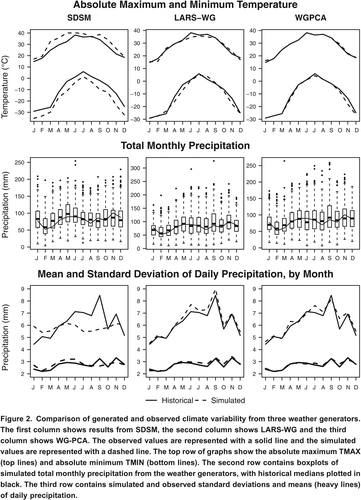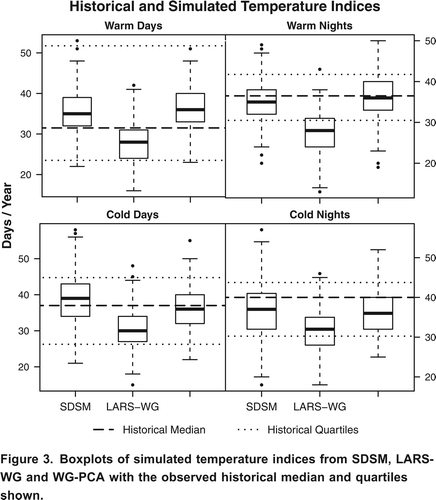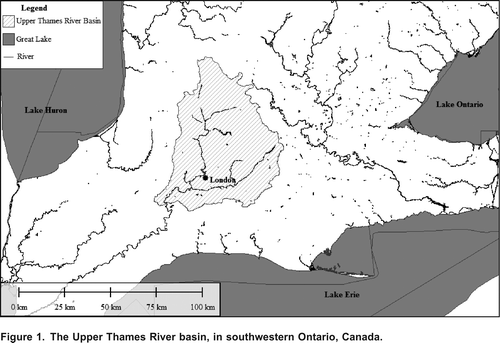Figures & data
Table 1. Environment Canada and NARR climate variables used in the study.
Table 2. Description of AOGCM and emissions scenarios used in the study.
Table 3. Summary of selected large-scale predictor variables corresponding to selected predictands for SDSM. See for definitions of predictor variables.
Figure 2. Comparison of generated and observed climate variability from three weather generators. The first column shows results from SDSM, the second column shows LARS-WG and the third column shows WG-PCA. The observed values are represented with a solid line and the simulated values are represented with a dashed line. The top row of graphs show the absolute maximum TMAX (top lines) and absolute minimum TMIN (bottom lines). The second row contains boxplots of simulated total monthly precipitation from the weather generators, with historical medians plotted in black. The third row contains simulated and observed standard deviations and means (heavy lines) of daily precipitation.

Figure 3. Boxplots of simulated temperature indices from SDSM, LARS-WG and WG-PCA with the observed historical median and quartiles shown.

Figure 4. Boxplots of simulated precipitation indices from SDSM, LARS-WG and WG-PCA with the observed historical median and quartiles shown.

